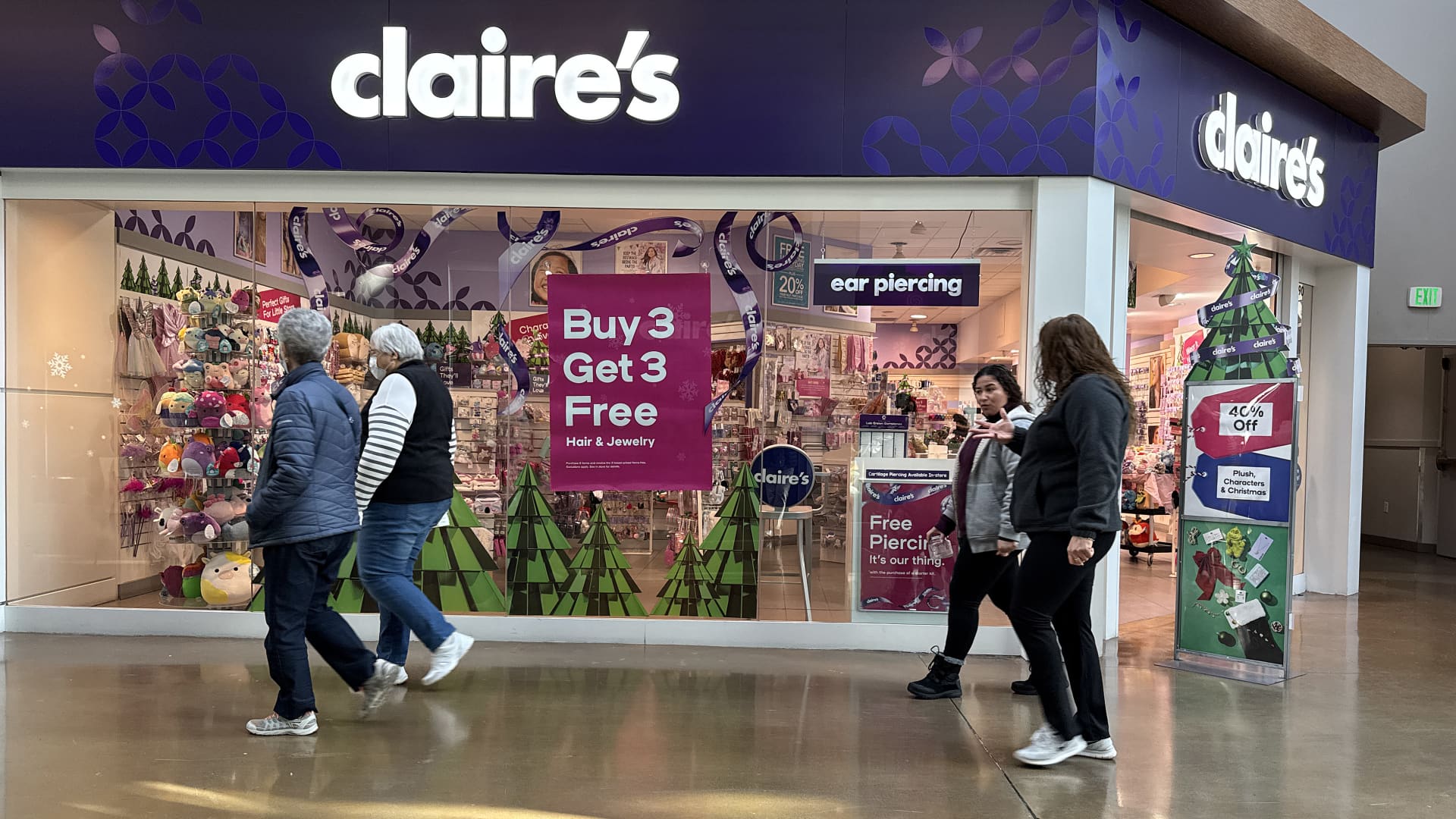‘A broken business’: The company behind the makeover of bankrupt retailer Claire’s

People walk by a Claire’s store on December 11, 2024 in San Rafael, California.
Justin Sullivan | Getty Images
Claire’s is headed for a major makeover.
The tween retailer, known for its ear piercing stations, jewelry and purple carpeting, declared bankruptcy in early August, the second time in seven years, citing nearly $500 million in debt and an increasingly competitive environment.
Weeks later, private holding company Ames Watson announced it was buying up roughly 1,000 Claire’s stores across North America in a $140 million deal to rebuild the brand. The announcement paused the liquidation process at most Claire’s stores.
“We went and started to do some very deep due diligence, and we came to the conclusion that this was a broken business, not a broken brand,” Ames Watson co-founder Lawrence Berger told CNBC.
Ames Watson’s portfolio includes makeovers of other businesses, including hat retailer Lids and women’s retailer South Moon Under. Berger said the company, which has more than $2 billion in revenue, thinks of itself as a “mini Berkshire Hathaway,” buying and transforming companies without any intentions of selling them.
On top of its mounting debt, Claire’s has been facing a multitude of challenges. The retailer is expected to face headwinds from President Donald Trump‘s global tariffs, and malls have seen dwindling traffic over the past few years. Competitors, like Studs and Lovisa, have also popped up, aiming to offer sleeker ear piercing experiences.
Fellow Ames Watson co-founder Tom Ripley said he was first introduced to Claire’s through his twin daughters, who both got their ears pierced at one of the retailer’s stores over a decade ago. Ripley said that experience, coupled with customers’ loyalty to the brand, showed him that it was worth investing in.
“It’s a temple to girlhood and that place you buy your first lip gloss, a friendship bracelet and your first piercing,” Ripley told CNBC. “Claire’s has been a rite of passage to generations.”
acquired Lids in 2019 for $100 million and grew the company’s revenue, enhanced its in-store embroidery experiences and raised pay for employees.
For Claire’s, its piercing business is just as central to its brand as embroidery is to Lids because they’re both experiences that customers can’t get online, Ripley said. The framework for modernizing Lids without losing its essential business pieces — focusing on product, experience and people — is the same that Ames Watson plans to use for Claire’s.
“We don’t over-leverage, we don’t outsource the hard work and we don’t flip businesses,” Ripley said. “We roll up our sleeves, do the work ourselves and build for the next generation.”
Ripley said nostalgia is at the heart of the Claire’s brand, and the company is focused on modernizing Claire’s without losing its “magic.”
The storefronts will also get revamps, with the iconic purple carpets getting a fresh cleaning and the presentation of the merchandise getting an upgrade.
“Part of the wonder and fun of Claire’s is the ability to walk in that store, and you don’t know what to expect. You sort of meander around, and you discover things,” Berger said. “We don’t want to change that.”
The co-founders said they hope the rebirth of Claire’s will also speak to the millennial moms who would bring their children to stores. The pair said the company is experimenting with adding products in the store for the generation of women who grew up with Claire’s at its height.
With these changes, Ripley and Berger said they hope Claire’s will reemerge as the major player it once was in malls across America.
“Our hope is that we’ll be profitable from day one — that’s what our investment thesis is and, to be frank, that’s what healthy companies are,” Berger said. “We believe that it’s structured in a way that it should be profitable, but that means that we’ve got to do our jobs right.”
[title_words_as_hashtags




